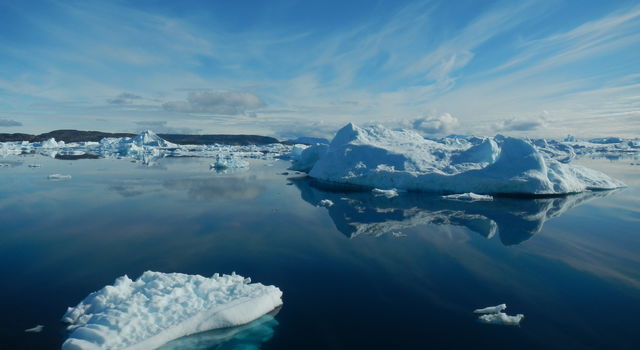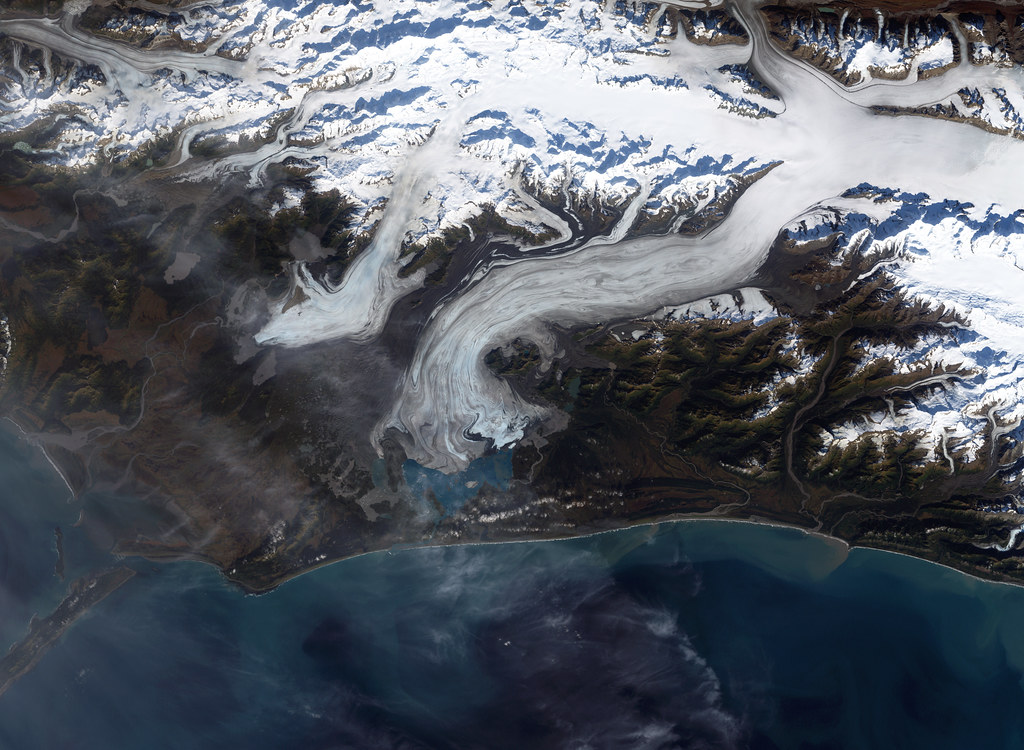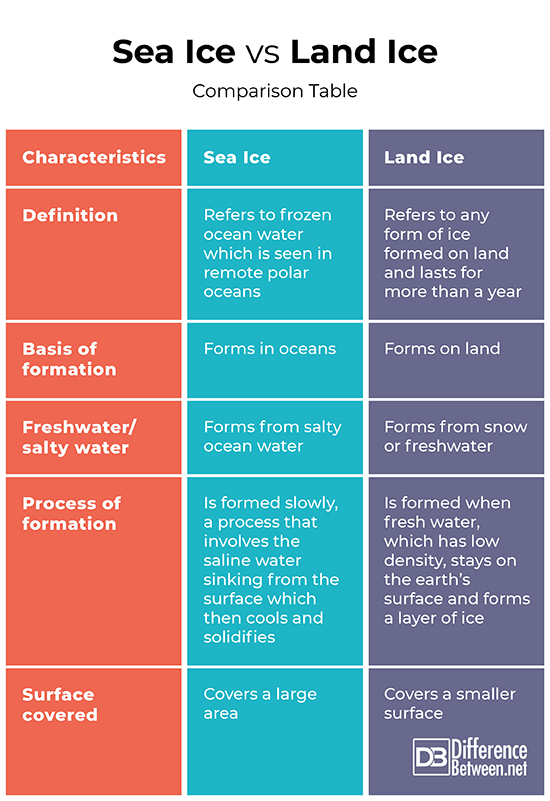Difference Between Sea Ice and Land Ice
With the rising global temperatures, the importance of ice at the earth’s Polar Regions cannot be over overemphasized enough. This is because ice helps in climate regulation. With rising temperatures, however, the level of ice has been significantly reduced as a result of ice melting. Some of the effects of ice loss include;
- Raised sea levels
- Endangered human and wildlife population
- Displacement of important sources of ancient climatic conditions
- The constant change in climate patterns
One of the two major ice levels that affect the environment includes sea ice and land ice. While the majority may not differentiate these two, they have various variances.
What is Sea Ice?
Covering over an average of 9, 652, 553 square miles, sea ice is frozen ocean water, and is seen in remote polar oceans. It forms from salty ocean waters, and is the most critical component of the aquatic life, not to mention people and the wildlife in the Arctic and Antarctica. Although some sea ice is present all year round in some regions, the common sea ice pattern involves ice formation during the winter and ice melting in the summer. Changes in sea ice affect climatic conditions, especially due to the gradual warm climatic conditions which in return melts the ice. As a result, sunlight does not reflect back into space which leads to the absorption of more solar energy into the earth. This leads to a further rise in temperatures. The movement of ocean waters is also affected by changes in sea ice not to mention the people and wildlife living in the Polar Regions.
What is Land Ice?
Formed from freshwater, land ice is any form of ice formed on land and lasts for more than a year. Categories of land ice include ice caps, mountain glaciers, ice fields, ice sheets, permafrost, and ice fields. It covers close to 10% of the world and is found in all continents except Australia, with the majority being Antarctica and Greenland. Due to the current climatic changes, land ice is melting at high rates, with Mt Kilimanjaro and Antarctica losing significant land ice. The melting of the ice increases the sea level while decreasing glacier runoffs which in return lead to long term decline in natural water sources. The melting of land ice also increases global warming through the absorption of solar energy.
Similarities between Sea Ice and Land Ice
- Both are affected by an increase in global warming which in turn affects the environment
Differences between Sea Ice and Land Ice
Definition
Sea Ice refers to frozen ocean water which is seen in remote polar oceans. On the other hand, land ice refers to any form of ice formed on land and lasts for more than a year.
Basis of formation
Sea ice forms in oceans while land ice forms on land.
Freshwater/ salty water
Sea ice forms from salty ocean water. On the other hand, land ice forms from snow or freshwater.
Process of formation
Sea ice is formed slowly, a process that involves the saline water sinking from the surface which then cools and solidifies. On the contrary, land ice is formed when freshwater, which has low density stays on the earth’s surface and forms a layer of ice.
Surface covered
While sea ice covers a large area, land ice covers a smaller surface.
Sea Ice vs. Land Ice: Comparison Table
Summary of Sea Ice vs. Land Ice
Sea Ice refers to frozen ocean water which is seen in remote polar oceans. It is formed slowly, a process that involves the saline water sinking from the surface which then cools and solidifies. On the other hand, land ice refers to any form of ice formed on land and lasts for more than a year. It is formed when freshwater, which has low density, stays on the earth’s surface and forms a layer of ice. Bearing in mind the current adverse climatic conditions, environmental conservation measures should be put to place.
- Difference Between Profit Center and Investment Center - July 2, 2022
- Difference Between Anti-Trust and Anti-Competition - June 6, 2022
- Difference Between Stocktaking and Stock Control - June 6, 2022
Search DifferenceBetween.net :
Leave a Response
References :
[0]Rood R & Gettelman A. Demystifying Climate Models: A Users Guide to Earth System Models. Springer Publishers, 2016. https://books.google.co.ke/books?id=H9tCDwAAQBAJ&printsec=frontcover&dq=Difference+between+Sea+Ice+and+Land+Ice&hl=en&sa=X&ved=0ahUKEwiKn_zKuP7kAhVJJhoKHazyAqIQ6AEIYjAI#v=onepage&q=Difference%20between%20Sea%20Ice%20and%20Land%20Ice&f=false
[1]Wadhams P. Ice in the Ocean. CRC Press Publishers, 2000. https://books.google.co.ke/books?id=CQli-DiBqcQC&printsec=frontcover&dq=Difference+between+Sea+Ice+and+Land+Ice&hl=en&sa=X&ved=0ahUKEwiKn_zKuP7kAhVJJhoKHazyAqIQ6AEIKDAA#v=onepage&q=Difference%20between%20Sea%20Ice%20and%20Land%20Ice&f=false
[2]Macalady A & Thomas K. Antarctic Sea Ice Variability in the Southern Ocean-Climate System: Proceedings of a Workshop. National Academies Press, 2017. https://books.google.co.ke/books?id=pvydDgAAQBAJ&printsec=frontcover&dq=Difference+between+Sea+Ice+and+Land+Ice&hl=en&sa=X&ved=0ahUKEwiKn_zKuP7kAhVJJhoKHazyAqIQ6AEIPDAD#v=onepage&q=Difference%20between%20Sea%20Ice%20and%20Land%20Ice&f=false
[3]Image credit: https://imagecache.jpl.nasa.gov/images/edu/activities/omg_ice-640x350.jpg
[4]Image credit: https://live.staticflickr.com/2782/4382740938_0076ca0f65_b.jpg



